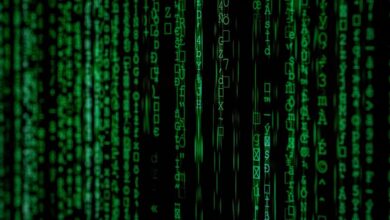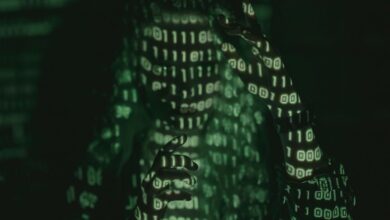Unlocking the Secrets Behind This Code 914951089

The code 914951089 presents a compelling case for analysis. Its nine-digit structure and a sum of 45 suggest underlying mathematical principles. Exploring its numerical relationships may reveal patterns and insights that extend beyond mere digits. Additionally, employing cryptographic techniques could unearth deeper meanings, linking the sequence to broader historical contexts. This raises the question: what hidden narratives might be concealed within this seemingly simple code?
The Origins of 914951089
The number 914951089 has its origins rooted in various systems of classification and identification, serving multiple purposes across different domains.
Its code significance lies in the unique numerical symbolism it embodies, reflecting cultural, mathematical, and philosophical attributes.
The interpretation of such numerical sequences can unlock deeper meanings, providing insights into human cognition and the quest for understanding within structured frameworks.
Analyzing the Structure of the Sequence
Understanding the origins of 914951089 sets the stage for a detailed examination of its structural composition. Through number theory and sequence analysis, the sequence reveals patterns that merit further investigation. Below is a table summarizing its numerological properties:
| Element | Value |
|---|---|
| Total Digits | 9 |
| Unique Digits | 5 |
| Sum of Digits | 45 |
| Average | 5 |
| Largest Digit | 9 |
Exploring Mathematical Patterns
How do mathematical patterns manifest within the sequence 914951089? This numerical sequence exhibits intriguing characteristics that invite pattern recognition.
By analyzing its digits, one may uncover recurring themes or relationships, potentially revealing underlying rules. Such exploration can enhance understanding of numerical behaviors, offering insights into broader mathematical concepts.
Ultimately, recognizing these patterns fosters a deeper appreciation for the nature of sequences and their implications.
Possible Cryptographic Techniques
In examining the cryptographic techniques applicable to Code 914951089, three primary methods emerge: frequency analysis, substitution ciphers, and transposition ciphers.
Frequency analysis leverages the statistical occurrence of characters to identify patterns, while substitution ciphers replace characters systematically to obscure meaning.
Transposition ciphers rearrange the order of characters, maintaining their identity but altering their sequence, thus enhancing complexity in the code’s deciphering process.
Frequency Analysis Techniques
Frequency analysis serves as a foundational technique in cryptography, enabling the examination of the distribution of characters within a given text.
By employing analysis tools, cryptographers can identify patterns in frequency distribution, revealing insights into the structure of the code.
This method is particularly effective against simple ciphers, facilitating the decryption process and enhancing the pursuit of freedom in secure communication.
Substitution Cipher Methods
Various methods of substitution ciphers play a crucial role in the field of cryptography, serving as fundamental techniques for encoding and decoding messages.
These encryption methods include simple substitution, where each letter is replaced by another, and more complex variations like the Vigenère cipher.
Cipher examples illustrate the versatility of these techniques, enabling secure communication and safeguarding information against unauthorized access.
Transposition Cipher Approaches
Although substitution ciphers focus on replacing characters to obscure messages, transposition ciphers rearrange the order of characters within a message, maintaining the original characters but altering their positions.
This method enhances security against certain cryptanalysis methods and complicates codebreaking strategies.
- Columnar transposition
- Rail fence cipher
- Route cipher
- Scytale cipher
Historical Context and Similar Codes
The historical context of code 914951089 reveals significant parallels with other communication systems utilized throughout the 20th century.
Its cultural significance is rooted in the evolution of cryptographic methods, reflecting historical uses in wartime and espionage.
Similar codes have served as tools for secure communication, highlighting humanity’s ongoing quest for privacy and the protection of information against oppressive forces.
Practical Applications of Decoding Techniques
Decoding techniques serve critical functions across numerous fields, enabling professionals to retrieve and interpret concealed information effectively.
Various decoding tools enhance analytical capabilities, offering diverse application examples, such as:
- Data recovery in cybersecurity
- Language translation in multilingual contexts
- Bioinformatics for genetic data interpretation
- Historical document analysis in archaeology
These applications underscore the importance of decoding in fostering understanding and facilitating informed decisions across disciplines.
Conclusion
In conclusion, the code 914951089 serves as a testament to the intricate dance between mathematics and cryptography, inviting us to ponder the unseen connections that govern our understanding of information. Like a locked treasure chest, it guards not just numerical relationships but also the profound implications of secure communication throughout history. As we unravel its mysteries, we are reminded of the ever-present quest for knowledge, urging us to explore the depths of our cognitive capabilities and the structures that define them.




